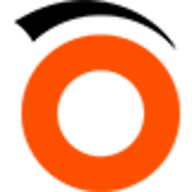

Zenoss Cloud and LogicMonitor are leading monitoring solutions. LogicMonitor stands out with superior features, making it worth the cost.
Features: Zenoss Cloud offers real-time monitoring, predictive analytics, and valuable user experiences. LogicMonitor provides comprehensive monitoring, robust integrations, and a wider range of integrations.
Room for Improvement: Zenoss Cloud needs enhancements in reporting capabilities, initial configuration, and possibly user interface improvements. LogicMonitor could benefit from better dashboard customization, additional alerting options, and improved automation features.
Ease of Deployment and Customer Service: Zenoss Cloud deployment is smooth with some configuration challenges. LogicMonitor has an even smoother deployment process and highly responsive customer service.
Pricing and ROI: Zenoss Cloud offers affordable pricing with good ROI. LogicMonitor pricing is higher but justified by extensive features, resulting in favorable ROI.
| Product | Market Share (%) |
|---|---|
| LogicMonitor | 4.2% |
| Zenoss Cloud | 0.7% |
| Other | 95.1% |


| Company Size | Count |
|---|---|
| Small Business | 10 |
| Midsize Enterprise | 9 |
| Large Enterprise | 8 |
| Company Size | Count |
|---|---|
| Small Business | 4 |
| Large Enterprise | 5 |
LogicMonitor offers flexible IT monitoring with customizable dashboards and robust alerting capabilities. It integrates seamlessly with third-party apps like ServiceNow and provides a single-pane view for diverse IT environments, aiding in proactive issue resolution and enhancing operational efficiency.
LogicMonitor stands out with its capability to monitor diverse infrastructures including Cisco Voice systems, data centers, and virtual environments. Supporting servers, storage, networking devices, and applications, it provides seamless integration with cloud services like AWS and Azure. Users leverage its scalability and flexibility, benefiting from dynamic thresholds, anomaly detection, and detailed visualization. All these features contribute to improved management of IT assets and streamlined operations. Users suggest improvements in mapping, reporting, and automation for remediation, desiring more customizations and an expansive application performance monitoring toolset.
What are LogicMonitor's key features?LogicMonitor is widely implemented across industries, providing monitoring for infrastructure in sectors like telecommunications, cloud computing, and managed services. Managed service providers particularly value its ability to track client environments, deliver proactive alerts, and generate comprehensive reports, while its integration with cloud platforms like AWS and Azure offers users centralized management and visibility into IT assets worldwide.
We monitor all AIOps reviews to prevent fraudulent reviews and keep review quality high. We do not post reviews by company employees or direct competitors. We validate each review for authenticity via cross-reference with LinkedIn, and personal follow-up with the reviewer when necessary.